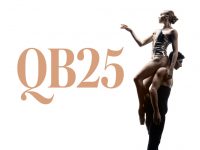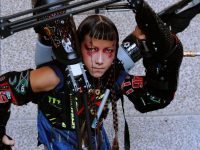Changes to APRA/AMCOS/PPCA Licensing Fees for Studios & Eisteddfods Set to Dramatically Increase
Special Meeting to Discuss Impact on Dance Industry | November 11
YOU ARE INVITED! If you are concerned about the impact or details of new licensing fees for using copyright music in the dance industry please come along this SATURDAY 11th NOVEMBER at Beverley Park Golf Club (details below)
Paying for the right to use commercial music in the dance industry is one administrative task most dance parents would be totally unaware of; while studio directors, dance teachers and dance competition organisers are increasingly worried about the impact of rising music licensing fees will have on their businesses and ability to deliver dance events and education on a daily basis.
In Australia, the licensing fees for each time a music track is played for commercial and public purposes are collected and administered by the Australasian Performing Right Association Limited (APRA), Australasian Mechanical Copyright Owners Society Limited (AMCOS), Phonographic Performance Company of Australia Limited (PPCA) and Australian Recording Industry Association (ARIA) .
Licenses mean music can be legally used for dance classes and performances and the fees are intended to ensure the songwriters, recording artists and music publishers receive payment for the use of their musical creations.
This year, APRA/AMCOS and PPCA introduced new music copyright fees for both dance studios and eisteddfod organisers that have resulted in costs escalating from a few hundred dollars a year for most smaller eisteddfods to many thousands in some cases.
So what has changed and what do you need to know?
APRA/AMCOS/PPCA provide 3 licenses for the use of music (live and pre-recorded) in dance:
- For public performances and use in class.
- For the reproduction of music for events and in class.
- For use in concerts and events.
Dance studios also need a fourth license from PPCA for the use of recorded music for concerts and live performances for multiple events.
The biggest change has been the introduction by APRA/AMCOS/PPCA of a new fee structure for the use of music at eisteddfods and dance competitions. This new so-called ‘blanket’ fee requires the organisers of eisteddfods to pay $0.99 per entry (inc GST) to cover the music copyright licensing for use of music at their events. This fee applies regardless of the number of times a track is repeated or if one competitor enters many different sections. Additionally, this new fee structure has been drawn up with the Australian Eisteddfod Societies of Australia (AESA) – apparently without consultation with the wider dance industry – that allows AESA members a discount rate of $0.76 per entry, which apparently also provides AESA a $0.10 per entry levy for administration costs for collecting this fee from their members on behalf of APRA/AMCOS/PPCA.
For example, if your local eisteddfod hosts 500 solos and 200 group events, the organisers are required to pay $693 for their music licence for the event. On top of this, both the venue and the dance studios will have also had to purchase licenses for the use of the same music.
This fee will increase to $1.54 per entry in 2018, $2.31 in 2019 and $2.75 in 2020! This fee will increase with CPI each year thereafter. The end result will be higher costs to run eisteddfods which will ultimately be passed on to the entrants and dance studios, making it even more expensive for kids to participate in dance.
As the implications of this new structure have come to light, more and more people are expressing their concerns and posing questions of the complexities of licensing for music use in the dance world. Sonyia Walsh (who has a long career in both events management, dance teaching, choreography and adjudication but is now independant of any dance affiliation) has accidentally become the de facto spokesperson for this issue, along with Jenny Jones and Chris McClellan, and they have organised a meeting in Sydney on Saturday November 11 with representatives from APRA, AMCOS and PPCA in attendance to answer your questions and discuss the intricacies of music copyright for dance studios and competitions.
Walsh believes these new copyright fees will make it unaffordable for many parents to even enter eisteddfods and will see some close down altogether. “If Eisteddfods close it will effect several other industries also like trophy businesses, venue hire, costumes, private lessons, dance wear, printing and advertising companies, video operators, photographers, food sales, adjudicators, scribes, accommodation and the travel industry will all lose revenue. Smaller regional eisteddfods will be hardest hit. The bigger picture effects many people.”
Walsh has posed many questions relating to this new per-competitor fee being imposed and urges everyone to consider:
-
How does it account for music that is out of copyright? (such as old classical music)
-
How does it account for music that is created originally for the dance and not published? (such as personal permission from the artist)
-
How does it account for competitors not showing up or competing and the music never gets played? (eisteddfods have many drop-outs)
-
How does it account for ‘impro’ sections where a small section of music is played repeatedly?
-
How does it account for multiple repeats of certain music tracks? (at both eisteddfods and when studios play music repeatedly during the year under one blanket licence)
-
How does it account for the fact that eisteddfod audiences ‘rotate’ through the day and many people only come in for a short while and probably only hear a few pieces of music? (during solos sections the audience could only be a handful of people unlike concerts when the audience is likely full and there for several hours)
-
Why was AESA the only organisation involved in negotiating this new fee structure and not other dance industry organisations? (especially as AESA only represents a small minority of eisteddfods in Australia)
-
Why do members of AESA get special rates when eisteddfods are not required to be their member, and most are not?
-
Why is there a lack of consistency of fees across all eisteddfods and events? (it has been discovered that various eisteddfods have been able to negotiate different rates with APRA/AMCOS/PPCA)
-
Why should APRA/AMCOS/PPCA collect fees from the event organisers, dance studios, videographers and venues ALL for the same event? (that makes it 4 times!)
-
How do they differentiate between an eisteddfod being a commercial or con-commercial event?
-
How do we even know the fees are distributed to the actual artists being used in dance routines? (it appears there is no guarantee who or where the royalties go to)
-
Why is the dance industry treated differently to other activities/competitions that use music? (gymnastics, physical culture, ballroom dancing, rollerskating, gym classes, ice skating, yoga, cheerleading etc)
-
If educational institutions are exempt from paying copyright fees for music, then why do dance studios have to pay it when they are training artists who sit exams and even get dance teacher/performer qualifications?
The other point to consider, says Walsh, is that people are forgetting that at dance competitions music is ‘secondary’ to the dance, it is not the focus. Dance technique, choreography, creativity of performance and the overall talent of an amateur performer are the primary reason to participate in dance eisteddfods as they provide a platform to display their work and develop skills in order to become professional.
“It’s not fair that they’re targeting people on this level when it’s just a little child that wants to dance and perform their dance. The music is secondary to what they’re doing … it’s part of what they do. They’re saying the venue has to pay a fee because they’re playing music at their venue. Studios have to pay a fee to record the music to play it at concerts/eisteddfods, but then you hire a venue that’s covered the licence fee, but their fee apparently doesn’t cover the music that you play! Then the eisteddfod that hired that venue has to pay a fee to play your music, which actually is the competitor’s music that should be covered under the dance studio copyright licence. Then the performers that perform on stage from the dance schools have to be also be covered, so now we’re going to charge yet another fee.
“They’ve charged it per competitor based on what they thought was a good idea – but without proper consultation. As a result, eisteddfods are now having to pay large bills for copyright,” said Walsh.
There is also much confusion about exactly what dance studios are covered for with their contracts, and evidently there is much inconsistency across the industry. Walsh says that majority of studio owners think they are already covered for using music at eisteddfods, but they are not which is why this new charge has been introduced according to APRA/AMCOS/PPCA.
Also, many organisers are now receiving their new invoices with shock. Walsh says she knows of one small eisteddfod that jumped from $80 last year to $1600 this year; and others from $200 to several thousands!
Additionally, to add to the confusion, a new licensing product titled ‘OneMusic’ is set to be launched in 2018 by APRA/AMCOS/PPCA that claims to be a ‘”one stop shop” solution for music licensing. This will see some clubs/venues being charged tens-of-thousands for their annual music licensing, which will have a devastating trickle-down effect with how much they need to charge for hiring their venue for events like dance competitions and concerts to recoup the costs. For dance studios, the example given in the online consultation document shows a dance school of 300 students running 42 classes a week and doing multiple performances through the year will see an annual bill of $2,875.50.
“Prior to this new fee most eisteddfods have run at a loss, just break even, or some make a slight profit,” said Walsh. “However, that profit is used as a contingency for the following year’s eisteddfod. Majority of eisteddfods are run by volunteers to put on these events for local children to platform their work and dance schools that run eisteddfods do it as a fundraiser to keep costs down for parents at concert time. This fee is going to impact on their decision to even consider running an eisteddfod as all their profits and hard voluntary work will be for nothing.”
At the end of the day, Walsh says she and many other champions of the dance world are simply worried that these increased fees and changes will eventually fall on the shoulders of the parents who pay for their children to participate in the performing arts.
“These changes will disadvantage the entire industry in a chain reaction. There will be increased entry fees, events will close down, kids won’t be able to compete as frequently or at all, which means they will take fewer classes at their studio, cease private lessons, then the studio may shrink in size. At the other extreme, many families make a holiday out of attending a dance competition out of town, and if studios stop entering these then tourism will decrease as a result also resulting in economic loss and less community events.”
Further information about obtaining music license for dance studios and eisteddfods can be found at apraamcos.com.au and apraamcos.com.au/music-customers/licence-types/music-in-education/eisteddfod-licence/ and OneMusic
To get in contact with the organisers of this meeting please email eist.org.au@gmail.com
ADVICE ON MUSIC COPYRIGHT FOR THE DANCE INDUSTRY
General Public Meeting with representatives from APRA/AMCOS and PPCA
Saturday 11th November, 11;30am
Beverley Park Golf Club, 87a Jubilee avenue, Beverley Park, 2217
* A donation at the door would be appreciated to help cover the hire cost of the meeting room.
* If you are unable to attend but want to support this meeting, you can help by making a small donation to cover the out-of-pocket costs for organising this meeting by going to PayPal and choosing the ‘send money to friends or family’ option to eist.org.au@gmail.com














